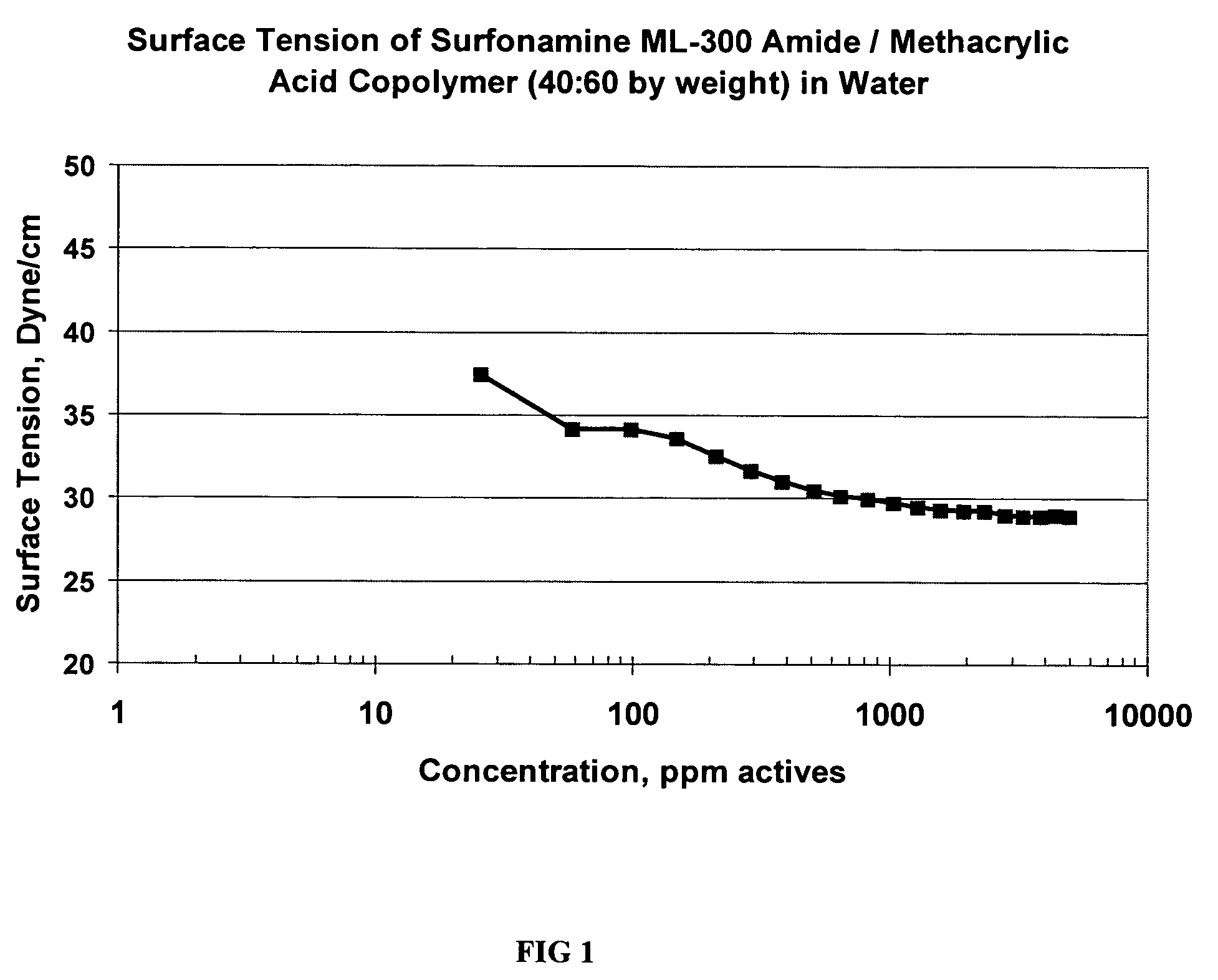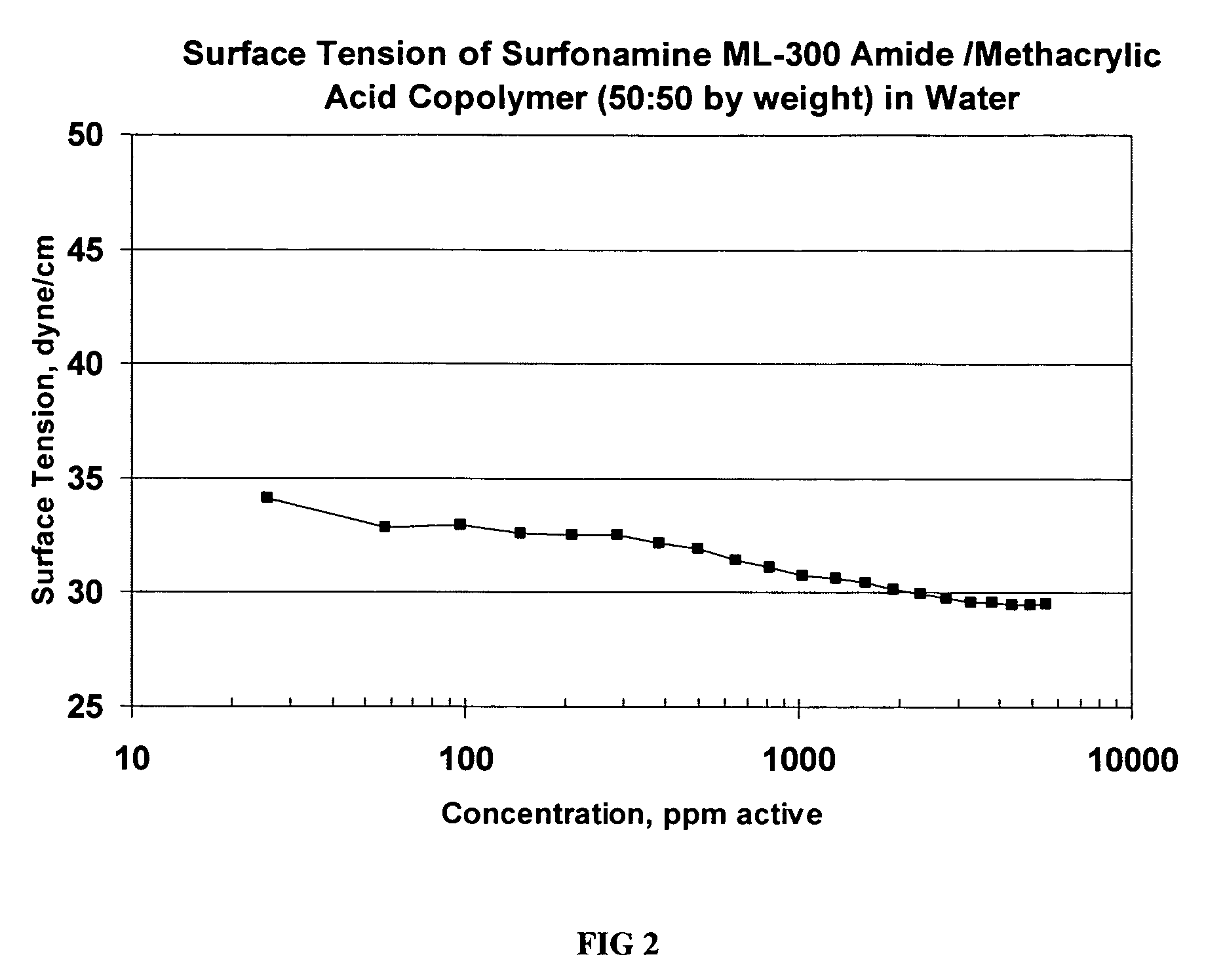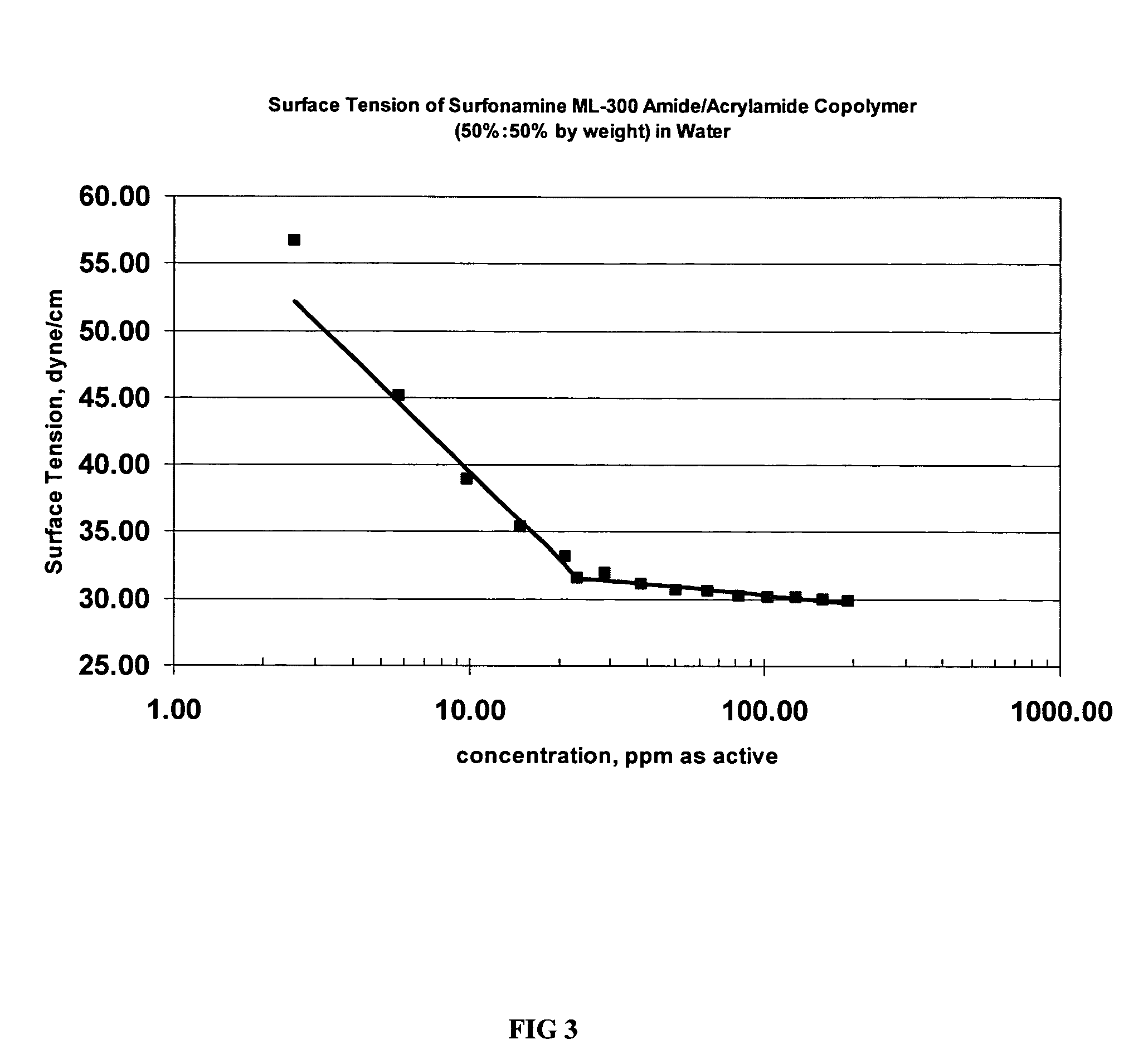Surface Active Polymers as Detergents
- Summary
- Abstract
- Description
- Claims
- Application Information
AI Technical Summary
Benefits of technology
Problems solved by technology
Method used
Image
Examples
example 1
Preparation of Polymerizable Amide from Surfonamine® ML-300 and Maleic Anhydride (a.k.a. “ML-300 Amide”)
[0030]In a round bottom flask, 300 g (1.0 mole) of Surfonamine® ML-300 amine is heated to 60° C. (or until liquid). Half of the stoichiometrically-required amount of ground / powdered maleic anhydride (“MA”) is slowly added and then stirred until the exotherm kicks in (approx. 10-15 minutes). Then the remainder of the MA powder is slowly added keeping the temperature below about 70° C. After addition, the contents of the flask are held at about 70° C. for at least one hour and then acid number titrations (phenolphthalein) are obtained (mg KOH / mole) using dry acetone in one titration and dry isopropanol in separate titrations, as solvents, with sufficient heating to enable the isopropanol solvent to react with excess maleic anhydride present. The acid number is checked every 30 minutes until subsequent readings are stable to an acid number variance of less than about 3 typically taki...
example 2
Preparation of ML-300 Amide (Example 1) / Methacrylic Acid Copolymer (40% ML-300 Amide:60% Methacrylic Acid by Weight)
[0031]A 3-necked 1-L flask is fitted with a mechanical stirrer, heating mantle, thermometer, reflux condenser, addition inlet, and provision for maintaining an inert atmosphere within the reaction vessel, such as a nitrogen inlet. The flask is charged with 142 grams of isopropanol and 104 grams of water. Heating is commenced under stirring and slow nitrogen sweep until a gentle reflux is achieved, at about 80° C. A first stream comprising 74 grams of a 10% aqueous sodium persulfate solution was slowly added to the refluxing contents of the flask simultaneously with a second stream comprising a liquid mixture of 38 grams of ML-300 amide monomer (Example 1) and 57 grams of methacrylic acid, over the course of about 2 hours. Subsequently, an additional 15 grams of 10% sodium persulfate was added and the temperature maintained at reflux for 1 hour to ensure complete reacti...
example 3
Preparation of ML-300 Amide (Example 1) / Methacrylic Acid Copolymer (50% ML-300 Amide:50% Methacrylic Acid by Weight)
[0032]By the same procedure described in Example 2, 51 grams ML-300 amide and 51 grams methacrylic acid are copolymerized in isopropanol (151 grams) and water (110 grams) with 78 grams of 10% sodium persulfate aqueous solution. The polymer is neutralized with 107 grams triethanol amine (TEA) and about 136 grams of water is added at the end to obtain a solids level of about 44%. The surface tension curve for this copolymer is shown in FIG. 2. This co-polymer results in lower surface tension values at low concentrations than the copolymer produced according to Example 1. Again, the copolymer is quite surface-active as reflected by the low surface tension of its aqueous solution.
PUM
 Login to view more
Login to view more Abstract
Description
Claims
Application Information
 Login to view more
Login to view more - R&D Engineer
- R&D Manager
- IP Professional
- Industry Leading Data Capabilities
- Powerful AI technology
- Patent DNA Extraction
Browse by: Latest US Patents, China's latest patents, Technical Efficacy Thesaurus, Application Domain, Technology Topic.
© 2024 PatSnap. All rights reserved.Legal|Privacy policy|Modern Slavery Act Transparency Statement|Sitemap



